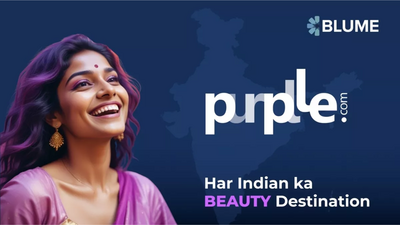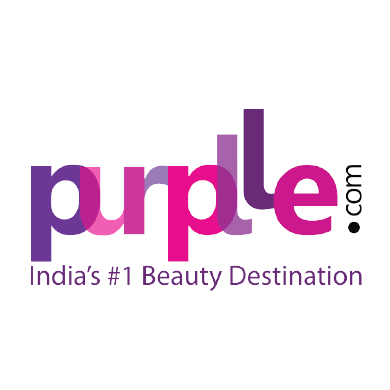A decade ago, you'd think only a celebrity endorsement on the TV could scream "we have arrived" for a product. Scrolling through a tiny screen watching an influencer perform a fun skit about your new sunscreen launch now has the same effect. Working with influencers who have built a dedicated audience can have an equivalent or even greater impact than vying for A-list names.
Most brands now have a dedicated influencer marketing budget, but it is important to understand where and how to use it. This is especially true for D2C companies, who want to work with influencers for a visibility boost, but with so many influencers and micro-influencers creating content daily, they feel overwhelmed by choices.
How do you choose an influencer?
What is good engagement?
Which influencer is trending today? (arguably the most difficult to determine with the current growth of influencers)
Rahul Dash, co-founder of beauty e-tailer Purplle, a Blume Fund I company, describes the right ways to approach influencer marketing and how they used it at Purplle to drive ROI.
Choosing a channel
While it may be tempting to use multiple platforms, splitting your effort will decrease your ROI. Imagine if you had already devoted resources to Threads. You would be left with a channel that is finding it hard to gain traction.
When deciding on a channel, ask yourself these questions:
- Do I need this solely for branding, or is it for performance marketing?
- Will this primarily be content? (Which means WhatsApp will be out)
- Is it audio, video, or text?
- If content, is it long-form or short-form? (For long-form, YouTube is better than Instagram.)
Let's use the example of Purplle to understand this. They were clear about focusing on content, so WhatsApp and a few other things were out. For content, they decided on video. This narrowed down their options to YouTube and Instagram. At that stage of its journey, the company was still educating its audience about its products, which meant they needed long-form videos. Hence, they selected YouTube, with Instagram following on its heels.
Why YouTube over Instagram? "YouTube is almost like a superset of our target group who interact online with content. The target group is also active on Instagram. That's a great set because I think YouTube gets about 400 million views a month, and about 40% of those views come from women, our target audience," said Rahul.
So, YouTube was large enough for Purplle to work with to drive ROI since they treated it as a performance marketing channel, not a branding one.
However, founders should be careful when selecting channels. Instagram is now getting a decent scale and may be on par with YouTube for many brands already.
Choosing the right influencer
To find the right kind of influencer, let's go over another set of questions:
- Who is creating this content?
- How much content is being created?
- What is the target audience for this content?
- How does the target audience react to this content?
Relying solely on follower count is not an effective way to identify influencers. A better approach is to use YouTube APIs to assess engagement metrics on relevant topics. An even more effective metric is to evaluate cumulative engagement over a longer period - such as six months or even a year, depending on the newness of your category. During this process, you may encounter situations where you have to choose between an individual who has gained more followers in recent months versus someone with higher engagement but stagnant follower growth. The general rule here is that more engagement is better, even if the number of followers is growing slowly.
If you are working in a regional market, you should find out the language/dialect spoken in the area you are targeting and then use a tool like Klug, which provides directional signals on the type of influencers that are getting engagement. It provides information on the number and type of followers, number of views, and other basic metrics.
To emphasize the point that influencer marketing relies heavily on people, it's important to check yourself for any biases that may arise. Remain disciplined and do not target an influencer just because you like their content. Your personal preferences do not matter. Your only concern should be which content works with your target audience. It's especially important to remove any founder biases from this equation, as they may influence the decision-making process. For example, a founder may say "My wife told me about this influencer, we should work with her." This type of bias should be removed from the decision-making process in order to avoid potential failures.
Hiring relationship managers
It's important to accept some harsh truths. Influencer marketing is less about intelligence and more about logistics. Once you have figured out the answers to the above questions about choosing the right influencer, it is an unending stream of negotiations, bartering, and setting up meetings - in other words, influencing the influencer. You will need a team of relationship managers to take this up since many of them will be individually managed and come with diverse requirements.
At the end of the day, you're dealing with a person and not a dashboard of a Google campaign. So your relationship manager needs to send products, track returns, check how the product fits with the script, and handle any related logistics.
Relationship managers are usually inexpensive entry-level executives, but you might feel tempted to outsource some of it. If you go down that road, expect inefficiency similar to any other outsourced logistical play.
Choosing how much to pay an influencer
There is no system for assigning prices to a particular influencer, as the information about them is opaque. The most structure you can get here is if you categorise as Mini, Micro, or Mega based on the level of influence they have in their chosen social universe and assign pricing to each tier.
Freakins saw the influencer fees drop when they got an insider to run influencer marketing. “At my previous company, we didn’t speak the language of the influencers and were getting inflated rates. Now at Freakins, I've seen a huge difference because my co-founder hired someone to lead influencers. They come from this ecosystem of fashion, and they know a lot of these influencers. Because of this, we get access to many micro-influencers, and there seems to be a lot of arbitrage and a lot of opportunity to capture,” said Puneet.
You don't necessarily need to pay video creators upfront; payment can be made post-video. Purplle explored providing influencers with media money to promote their video on their own channels. This helped them because it was their video, and the influencers gained followers as a result.
Choosing your ideal cost per view
The equation to determine this is quite simple: divide the number of promised views by the fee. However, deciding whether this value should be five or fifty is not something that can be determined by anyone other than the business itself.
If your CTRs increase after creating a few videos, use that as a guideline and start testing. In three to six months, you will be able to confidently say, "This works, and this doesn't." At this point, the relationship manager will step in and initiate commercial discussions.
Using AI wisely
After identifying your influencers and other relevant information, you’ll be faced with a long list of influencers and an even longer list of their videos that you would need to sift through. This is where automation can come in handy to scout faster.
However, it's important to examine the context in which data exists within your category. AI can consume contextual data much faster, reducing a month-long process to just 10-15 minutes. However, it's essential to train your own brain on the data before training the AI. You need to ensure that the AI is replicating your thought process accurately, especially when it comes to understanding beauty or personal care products.
If you're just starting out, it's best to figure out your own "dictionary" of category tags before relying on technology to replicate it for you.
We created a proprietary dictionary that allows us to analyze any text related to beauty available on the internet. For instance, if an influencer says "Body shop, anti-frizz, dry shampoo" someone who doesn't understand beauty might not know that Body Shop is a brand, anti-frizz is the problem it's trying to solve, dry is the format of the product, and shampoo is the category. We are able to understand whether Plum is a brand in that context or Plum is an ingredient being used in that context and so on
Having this context is important before AI comes into the picture. “We went through over 60 influencer profiles and went through each of their videos to generate a certain profile for that influencer. There is no shortcut. For people who seriously want to do influencers, you can do it with fewer profiles, but it's important. The more depth you can do, the better. Then we basically automated this entire profiling at scale. This is again enabled through AI.” Rahul added.
Choosing what to measure
Google and Facebook excel at taking audiences with high intent that would have come to the brand even without spending on the search giants, making it look like you are getting returns from that spend. Generating intent is costly, and you can't rely solely on Google for it. While there are a few things you can do on Facebook, its setup limits your options. Figuring out these platforms has become more challenging in the last four years, but they excel at finding people who are the most likely to buy and can connect them with your platform.
However, if you don't pay close attention to what's going on, it could be that only your customers are coming through Google to do business with you. This could make it look like Google is cheaper.
YouTube provides various metrics to evaluate such as cost per view (CPV), cost per click (CPC), and revenue generated per click. However, the most relevant metric for measuring performance marketing is the revenue generated within the same category section.
When selling on Amazon, it can be challenging to evaluate the effectiveness of marketing campaigns because the platform does not provide any feedback after a click occurs. To assess the impact of campaigns, the daily run rate increase can be used as a proxy. For example, if a product sells 100 units on Amazon and an influencer campaign is launched, the run rate may increase by 3X during the days when the videos are promoted. Eventually, it will settle down at a rate that is approximately 30% higher than the previous run rate. Based on the chosen timeline, ROIs can be derived accordingly.
Therefore, the daily run rate increase is a viable way to evaluate the effectiveness of marketing campaigns on Amazon.
Budgeting for influencer marketing
Early-stage businesses should allocate their budget using an 80/20 ratio to generate a return on investment for every unit of spending during a specific month. This means that they should allocate 20% of the budget for experimentation while using the remaining 80% to generate a return. To ensure that the budget is not being wasted, it is recommended to start with smaller follower counts, such as 50,000, 25,000, or 100,000 followers, even though it may require more effort. This approach is safer compared to others since some accounts are likely to quickly scale from 25,000 or 50,000 followers to 300,000 or 1,000,000 followers. To maximize the chances of success, businesses should use specific language that targets the identified market.
In conclusion
By selecting the right channel and influencer, and considering factors such as target audience and engagement metrics, businesses can maximize the impact of their influencer campaigns. Influencer marketing can be an inefficient system, which leads to waste. To limit waste, businesses should avoid channels that do not fit the intended cost per view and use relationship managers to manage logistics and build strong connections with influencers, thereby keeping costs low.
Influencers are a new and rapidly evolving field, and most brands are still trying to figure out the best way to engage with them and establish effective practices. As a result, many rules and guidelines are still being developed. However, following these guardrails can help you maximize the impact of your investment in the early stages.
This article has been created based on internal sessions conducted for Blume’s portfolio companies.







